What the Dickens is Flag Day? A Complete History

You’ve probably seen “Flag Day” hundreds of times on your school calendars, and your iPhone insists on alerting you to it for some reason, but what exactly is Flag Day? How do we celebrate it? What are we supposed to do with our hands? We can answer some of those questions, but until the national anthem has dance moves, you’re on your own there.
Too Many Flags
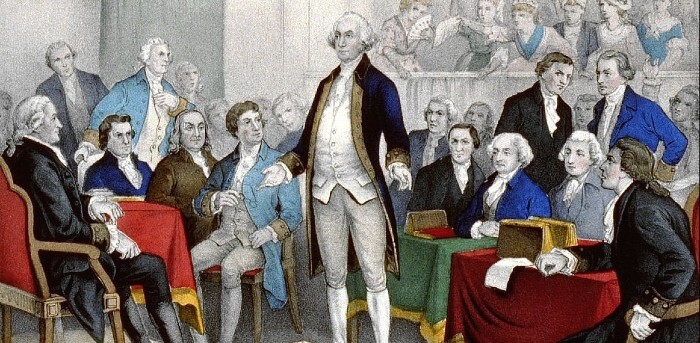
When the Flag Resolution was passed on June 14, 1777, it wasn’t out of any particular concern for national aesthetics. People were just flying too many different flags. They were kind of fighting a war, but nobody could tell who anybody else was, which is important when you’re supposed to be shooting at someone.
National Flags Weren’t Really a Thing

The purpose of the Flag Resolution was really just military in nature, as the idea of a national flag as part of civilian culture wasn’t so much a thing. They just needed a standardized sheet of fabric to fly into battle, so if you hung one outside your house, you’d be making all kinds of implications about your intention to act on your neighbor’s overgrown weeds or whatever.
They Didn’t Specify a Design
The Flag Resolution states only that “the flag of the United States be thirteen stripes, alternate red and white; that the union be thirteen stars, white in a blue field representing a new constellation." That left individual flagmakers with the kind of creative leeway that would get their asses kicked in redder states today, arranging those stars and stripes in any way that tickled their revolutionary fancy.
It’s Been Redesigned So Many Times

In fact, the official American flag has changed 26 times because those founding daddies didn’t foresee the problem with basing its design on the number of states in a country that acquired them faster than they could sew them on. The 36-star flag is especially a mess. Get it together, 36-star flag.
Betsy Ross Almost Certainly Didn’t Design It

We’re all told that seamstress Betsy Ross sewed the first American flag and even pitched the design, but that story came from her grandson a century later. There’s no evidence she had anything to do with the flag or ever even met George Washington, who wouldn’t have been on the flag committee anyway. It’s much more likely that Navy chairman Francis Hopkinson came up with the design (in payment for which he requested a “cask of the public wine,” which we should bring back, whatever that is), and there were any number of flagmakers who might have sewn it.
The First Flag Was a Little Impromptu
Arguably, the first American flag was flown on August 3, 1777, when the Americans holding Fort Schuyler responded to the British’s offer of letting them go if they surrendered by cutting up their own red, white, and blues clothes, sewing the strips together, and flying the result. They may have been naked, but they weren’t backing down.
Flagmania
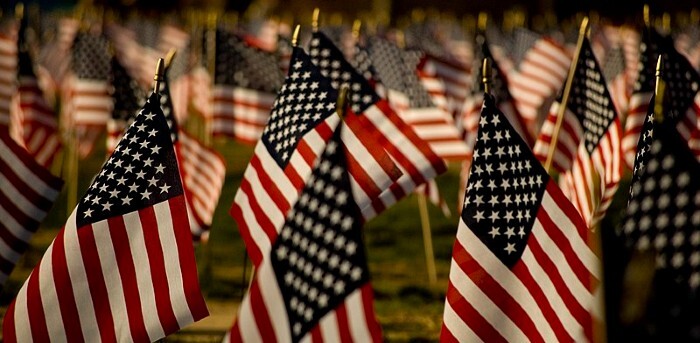
Everyday Americans started giving a shit about the flag in 1861, after Union soldiers fled Fort Sumter carrying their flag all the way back through the North. Everyone wanted a piece of that resonant image, and as flag sales soared, newspapers breathlessly reported on this weird new trend of people wanting to display flags in their homes, of all places. It was the avocado toast of the 1800s.
Trying to Make Flag Day Happen
In the midst of flagmania, as it was named by the media, Flag Day was technically created by a Connecticut man named George Morris who convinced his town to celebrate on June 14, 1861 with “a program of a patriotic order, praying for the success of the Federal arms and the preservation of the Union." It didn’t catch on, probably because it’s really hard to barbecue while you pray.
The First Official Flag Day
Although Morris remained that weird guy obsessed with flags, he wasn’t the only one, so in 1877, Congress directed the country’s public buildings to fly the flag on June 14. That’s it. That’s all you gotta do. Put up a flag. Flag Day done.
The Father of Flag Day
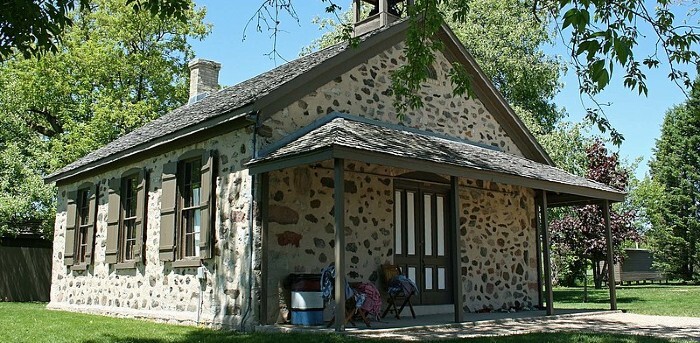
Even though it was clearly already a thing, the annual celebration of Flag Day is generally credited to a teacher named Bernard Cigrand, who promoted the idea of using Flag Day as an opportunity to teach children about the history of the flag and how to perform patriotism with songs and pledges. He gets busts in museums and George Morris gets to go fuck himself.
The Presidential Proclamation
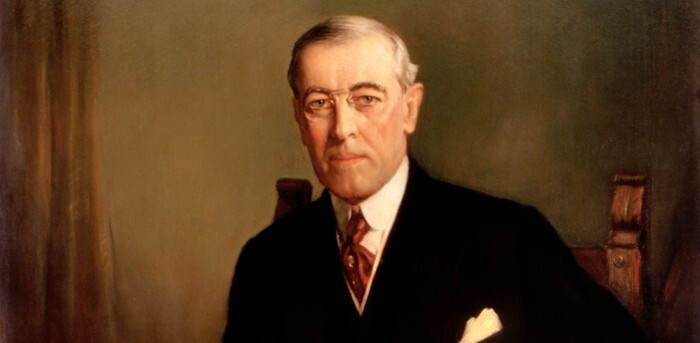
In 1916, in response to “circumstances have recently conspired to turn our thoughts to a critical examination of the conditions of our national life” (unclear what he could have been talking about), President Woodrow Wilson issued a proclamation to celebrate Flag Day with “special patriotic exercises” and “direct our minds with a special desire of renewal to thoughts of the ideals and principles of which we have sought to make our great Government the embodiment.” Basically, fly the flag and also think about it really hard.
United Flag Day
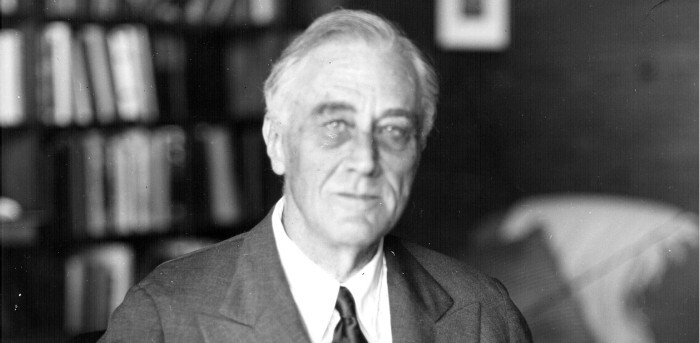
From 1942 to 1944, FDR briefly rebranded Flag Day as United Flag Day to display solidarity with America’s international allies (again, for unknown purposes). It would also be a good way to lose rural votes these days, but even then, its celebration was largely limited to a few parades in New York City, and they throw parades for everything.
Making It Official
Despite all these proclamations, Flag Day didn’t become an official national holiday until Congress made it a law in 1949. The law also requires the president to issue a Flag Day proclamation every year, damning every dude who just wanted lots of power to think of something new to say about the flag ever since.
The Bear Flag Revolt
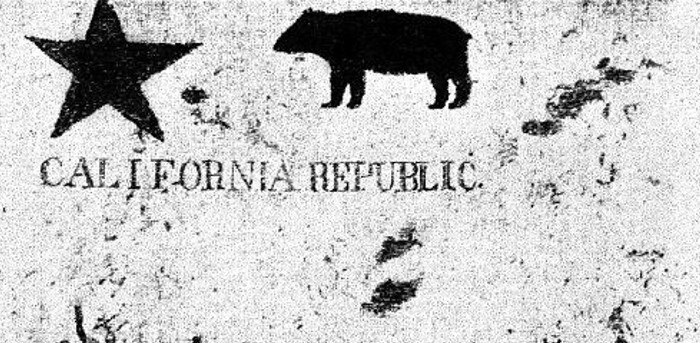
Flag Day carries special significance for some of the more eccentric Californians, who celebrate the time a bunch of drunk mountain men “arrested the Mexican general, declared an independent nation, and raised a flag emblazoned with a bear and a star,” now the California state flag, which also happened to occur on June 14 in 1846. Etiquette tip for ursine loyalists: You have to fly it second on the flagpole because the American flag is a top.
Why Flag Day Isn’t Really a School Thing Anymore

You might remember boring Flag Day drills from your school days, but the kids these days are largely spared simply because they’re out of school by then. Starting in the mid ‘90s, American schools began scheduling their school years to start earlier and earlier, mostly for the same thing every teacher curses under their breath at least twice a day: standardized testing. Did the Founding Fathers consider that? Of course not. They hated patriotism, apparently.
Top image: Zach Vessels/Unsplash